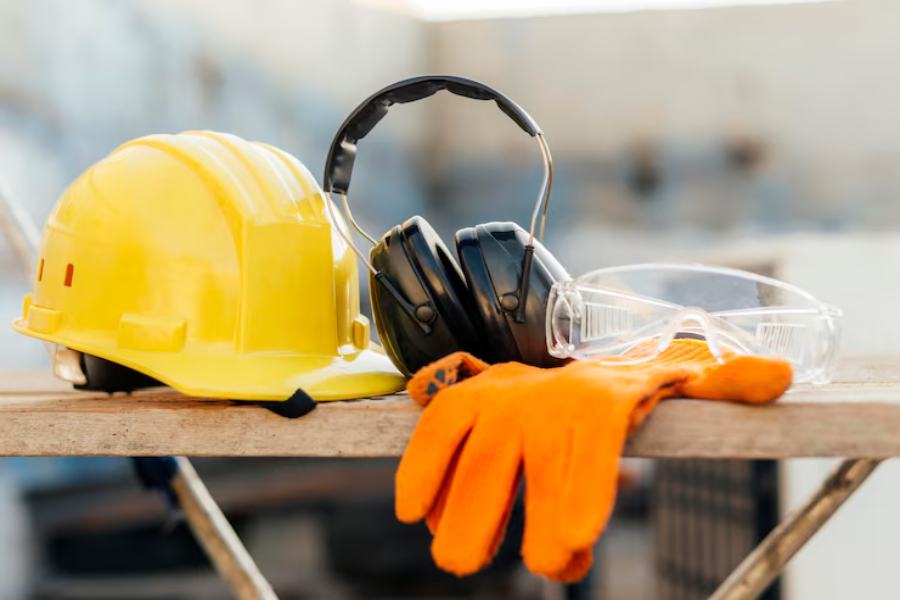The Occupational Safety and Health Administration (OSHA) was created to ensure safe and healthful working conditions by setting and enforcing standards and providing training, outreach, education, and assistance. But when it comes to actual employer responsibilities, the common question arises: Which of the following are employers required to do under OSHA? This query not only underscores the importance of workplace safety but also the legal implications for businesses that fail to meet OSHA’s mandates.
Employers, regardless of industry, must meet a wide range of requirements—from hazard communication and training to recordkeeping and providing proper equipment. These requirements are not optional. Non-compliance can result in hefty fines, legal consequences, or worse—injuries or deaths in the workplace.
This article breaks down exactly which of the following employers must do under OSHA? We’ll explore the fundamental responsibilities, when and why they’re enforced, how employers can stay compliant, and what penalties may arise for violations. Whether you’re a small business owner, an HR manager, or an employee looking to stay informed, this guide is built to inform and empower you with up-to-date OSHA compliance standards.
What Must Employers Do Under OSHA?
Employers are required to follow OSHA standards to ensure a safe workplace. This includes identifying and fixing hazards, providing training and personal protective equipment (PPE), maintaining accurate records, and reporting injuries. Employers must also allow OSHA inspections and ensure employees can report concerns without fear of retaliation. These duties protect worker health and help reduce workplace accidents.
The General Duty Clause as a Core OSHA Requirement for Employers
OSHA’s General Duty Clause is a cornerstone of employer responsibility. It requires that employers furnish a place of employment free from recognized hazards likely to cause death or serious harm. This clause is deliberately broad to ensure coverage of emerging risks not explicitly listed under OSHA standards.
Employers are expected to anticipate and mitigate workplace dangers. Even if OSHA does not have a specific rule for a hazard, failure to act on known threats may still be a violation under this clause. For example, if a company is aware of toxic exposure but doesn’t provide proper protection, OSHA may cite them under the General Duty Clause.
This overarching rule emphasizes that employer responsibility extends beyond compliance checklists. It highlights the proactive nature of workplace safety management, urging employers to assess risks, maintain safety procedures, and address hazards even before OSHA issues specific regulations.
Understanding and adhering to the General Duty Clause isn’t just a legal requirement—it’s the backbone of any serious workplace safety culture.
When Employers Must Comply with OSHA Standards
Employers must comply with OSHA standards continuously, not just during inspections or incidents. Workplace safety is a full-time, ongoing responsibility.
Ongoing OSHA Compliance Requirements
Employers are required to comply with OSHA standards at all times. These responsibilities are not limited to specific events or seasons—they apply consistently, every day, across all industries. Maintaining a safe and healthy work environment is a 24/7 obligation. Whether a company operates seasonally or year-round, its duty to provide a hazard-free workplace never pauses.
New Hires and Job Role Adjustments
OSHA compliance becomes especially critical during the onboarding process or when an employee changes roles. Employers must ensure that workers receive up-to-date safety training tailored to their responsibilities. This includes instruction on potential job hazards, safe practices, and emergency protocols. Failure to educate staff properly can result in preventable accidents and regulatory violations.
Implementing New Equipment or Procedures
Whenever new machinery, tools, or operational procedures are introduced, employers must revisit and revise safety policies. OSHA expects that businesses will evaluate potential hazards associated with changes in equipment and update training accordingly to protect workers.
Responding to Hazards and Incidents
When a workplace hazard is reported or an injury occurs, employers are obligated to act immediately. Prompt investigation, hazard mitigation, and employee communication are critical to maintaining OSHA compliance and preventing repeat incidents.
After OSHA Inspections or Citations
If OSHA issues a citation or conducts an inspection, employers must promptly correct the identified issues. Documentation of corrective actions, safety audits, and ongoing training is essential to demonstrate a commitment to compliance and worker safety.
OSHA Compliance Requirements All Employers Must Follow
Employers across all industries are required to meet specific standards under OSHA regulations to protect the health and safety of their workers. The following key responsibilities outline what every employer must do to stay compliant:
- Provide a Safe Work Environment: Employers are legally obligated to maintain a workplace free from recognized hazards that can cause serious injury or death. This includes assessing risks and taking corrective measures to eliminate them.
- Post OSHA Information: A mandatory OSHA poster titled “Job Safety and Health – It’s the Law” must be displayed in a location where all employees can see it. This poster outlines worker rights and employer responsibilities.
- Train Employees on Hazards: Workers must receive training about workplace hazards in a language they understand. This includes safety procedures, emergency protocols, and the correct use of equipment.
- Maintain Records of Injuries and Illnesses: Employers must document all workplace injuries and illnesses using OSHA Form 300 and report serious incidents, such as hospitalizations or fatalities, within the required timeframes.
- Provide Personal Protective Equipment (PPE): Employers are required to provide PPE, such as gloves, helmets, and eye protection, at no cost to employees and ensure they are properly maintained.
- Comply with OSHA Inspections: Companies must grant OSHA inspectors full access during evaluations and cooperate during the entire inspection process.
- Prevent Retaliation: Employers must ensure that workers can report hazards or file OSHA complaints without fear of punishment or discrimination.
How Can Employers Stay Compliant with OSHA Regulations?
Employers must adopt a proactive and well-structured approach to ensure full compliance with OSHA regulations. Here’s a step-by-step guide that outlines essential actions every employer should take:
- Develop a Written Safety Program: Start with a documented safety plan that clearly outlines procedures, employee responsibilities, and emergency protocols. This program should be tailored to the specific risks of your workplace and regularly updated.
- Conduct Regular Safety Training: Training should be continuous and provided in a language that all employees understand. It must cover hazard identification, equipment handling, and emergency response to ensure workers are prepared.
- Perform Routine Inspections: Carry out regular walk-throughs and hazard assessments to identify and eliminate safety risks. Early detection helps prevent accidents and keeps your operations aligned with OSHA standards.
- Keep Thorough Documentation: Maintain accurate records of training sessions, injury reports, internal audits, and corrective actions. These documents not only demonstrate compliance but also guide safety improvements.
- Respond Swiftly to Incidents: Any workplace accident or reported hazard should be investigated immediately. Prompt corrective action minimizes future risks and helps maintain a safe environment.
- Use OSHA Resources: Employers should consult official OSHA publications, digital tools, and hotlines to stay current with evolving regulations and industry-specific standards.
The Cost of OSHA Non-Compliance and Legal Consequences
Failing to comply with OSHA standards doesn’t just risk employee safety—it also poses serious financial and legal threats to a business. Here are the main consequences employers may face:
-
Financial Penalties
OSHA violations can lead to significant fines, ranging from a few hundred dollars for minor infractions to over $15,000 per violation for serious offenses. Willful or repeated violations can incur even steeper penalties.
-
Business Disruption
Major safety violations can result in partial or full shutdowns during investigations or corrective actions. This interruption can delay operations and cause loss of revenue.
-
Reputational Damage
A company’s public image suffers when it’s linked to safety violations. Poor OSHA compliance records can deter clients, investors, and job seekers from associating with the business.
-
Employee Turnover
Unsafe working conditions often lead to dissatisfaction among staff. High turnover not only increases hiring costs but also reduces workforce stability and morale.
-
Legal Action
In the event of serious injury or fatality, employers may face lawsuits or criminal charges. Legal consequences can extend well beyond OSHA fines and lead to long-term financial strain.
Remaining compliant with OSHA standards is not just a regulatory duty—it’s a business imperative.
Conclusion
When it comes to the question of which of the following employers are required to do under OSHA, the answer is both comprehensive and crucial. Employers must not only meet specific standards like posting safety notices, training workers, and maintaining records—they must go further. They must cultivate a culture of safety, stay updated on evolving standards, and ensure proactive hazard management.
Ignoring OSHA rules is not just a regulatory misstep—it’s a threat to employee well-being and business sustainability. Staying compliant is not just about avoiding penalties; it’s about demonstrating leadership, responsibility, and a genuine concern for human life in the workplace.
FAQ’s
What is OSHA, and why was it created?
OSHA stands for the Occupational Safety and Health Administration. It was established to protect workers by ensuring safe and healthy working conditions through regulations and enforcement.
Are small businesses exempt from OSHA?
Most private-sector employers, including small businesses, fall under OSHA’s jurisdiction, although some specific standards may differ.
Can an employee file a complaint anonymously?
Yes, employees can file safety complaints with OSHA anonymously to protect against retaliation.
What happens during an OSHA inspection?
Inspectors review records, tour the facility, and may interview workers. Employers must comply fully and take corrective actions if needed.
How often should safety training be conducted?
Training should be ongoing—at hiring, during equipment changes, and periodically to reinforce best practices.








